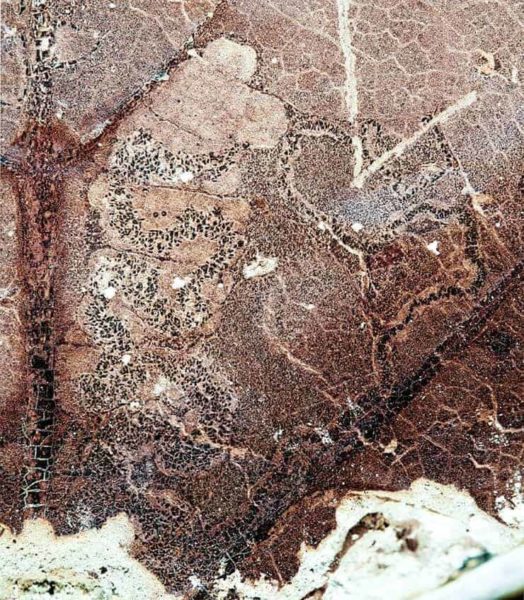After the asteroid impact at the end of the Cretaceous period that triggered the dinosaurs’ extinction and ushered in the Paleocene, leaf-mining insects in the western United States completely disappeared. Only a million years later, at Mexican Hat, in southeastern Montana, fossil leaves show diverse leaf-mining traces from new insects that were not present during the Cretaceous, according to paleontologists.
“Our results indicate both that leaf-mining diversity at Mexican Hat is even higher than previously recognized, and equally importantly, that none of the Mexican Hat mines can be linked back to the local Cretaceous mining fauna,” said Michael Donovan,graduate student in geosciences, Penn State.
Insects that eat leaves produce very specific types of damage. One type is from leaf miners — insect larvae that live in the leaves and tunnel for food, leaving distinctive feeding paths and patterns of droppings.
Donovan, Peter Wilf, professor of geosciences, Penn State, and colleagues looked at 1,073 leaf fossils from Mexican Hat for mines. They compared these with more than 9,000 leaves from the end of the Cretaceous, 65 million years ago, from the Hell Creek Formation in southwestern North Dakota, and with more than 9,000 Paleocene leaves from the Fort Union Formation in North Dakota, Montana and Wyoming. The researchers present their results in today’s (July 24) issue of PLOS ONE.
“We decided to focus on leaf miners because they are typically host-specific, feeding on only a few plant species each,” said Donovan. “Each miner also leaves an identifiable mining pattern.”
The researchers found nine different mine-damage types at Mexican Hat attributable to the larvae of moths, wasps and flies, and six of these damage types were unique to the site.
The researchers were unsure whether the high diversity of leaf miners at Mexican Hat compared to other early Paleocene sites, where there is little or no leaf mining, was caused by insects that survived the extinction event in refugia — areas where organisms persist during adverse conditions — or were due to range expansions of insects from somewhere else during the early Paleocene.
However, with further study, the researchers found no evidence of the survival of any leaf miners over the Cretaceous-Paleocene boundary, suggesting an even more total collapse of terrestrial food webs than has been recognized previously.


